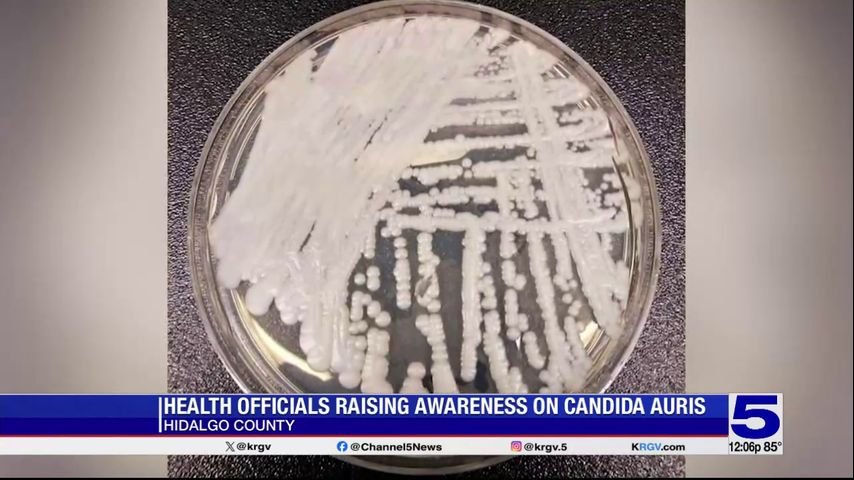Rising Concerns Over Candida Auris in the Rio Grande Valley
Health officials in the Rio Grande Valley are closely monitoring a surge in cases of Candida auris, a concerning antibiotic-resistant fungus that poses significant health risks, particularly to patients in healthcare settings.
What is Candida Auris?
Candida auris is a type of yeast that is becoming increasingly common in hospitals and long-term care facilities. According to the Centers for Disease Control and Prevention (CDC), this fungus is known for its resistance to multiple antifungal medications, making it particularly difficult to treat. In severe cases, Candida auris can lead to serious infections, especially in immunocompromised individuals.
The Current Situation in the Rio Grande Valley
This year, the Hidalgo County Health Department has reported approximately 150 confirmed cases of Candida auris. Similarly, Cameron County has documented 40 cases so far, with projections suggesting that this number will exceed the 50 cases reported in all of 2022. Although Candida auris primarily affects those with compromised immune systems, healthy individuals are also at risk of infection, prompting health officials to remain vigilant.
Risk Factors and Vulnerable Populations
Dr. James Castillo, health authority for Cameron County, emphasizes that while Candida auris primarily threatens chronically ill patients in healthcare environments, it is critical to monitor its spread. "It can be fatal in many cases, especially if it causes a bloodstream infection or becomes invasive," Dr. Castillo warns. "A significant percentage of patients may not survive such infections."
How Does Candida Auris Spread?
Candida auris can thrive on various surfaces found in healthcare settings, including hospital equipment, bed rails, and even skin. The fungus spreads mainly through direct contact, making stringent hygiene practices essential.
Testing and Treatment Protocols
Testing for Candida auris involves blood cultures or skin swabs, and results can take several days. Once a case is confirmed, the patient is placed in isolation. Health facilities must follow strict protocols such as:
- Regular disinfection of surfaces
- Mandatory gowns and gloves for staff and visitors
Recognizing Symptoms of Infection
Awareness of the symptoms associated with Candida auris is crucial for early detection. Signs to watch for include:
- Redness or rash
- Itching or irritation
- Swelling or tenderness
- Pus or drainage from wounds or medical devices
- Persistent fever and chills not responsive to antibiotics
- General weakness or fatigue
Visitors to hospitals should be particularly cautious to minimize the risk of transferring infections. Health experts recommend avoiding direct contact with patients and maintaining good hand hygiene.
Conclusion
While the rising cases of Candida auris in the Rio Grande Valley are alarming, health officials stress that it is not an immediate public health threat. However, continued vigilance in monitoring, preventive measures, and educational efforts are imperative to combat this potentially life-threatening fungus in healthcare settings.
For more comprehensive information, visit the CDC’s official page on Candida auris.
Staying informed and adhering to health guidelines can help mitigate the risks associated with Candida auris and protect vulnerable populations.


